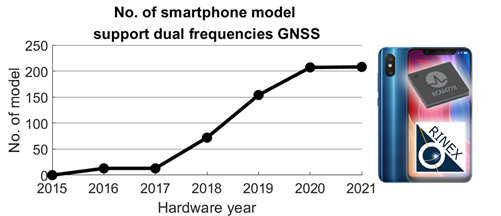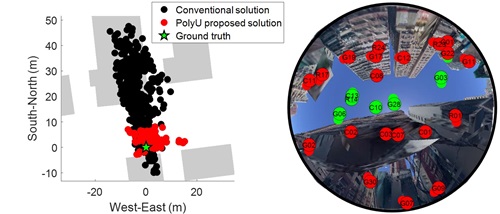Urban positioning: 3D mapping-aided GNSS using dual-frequency pseudorange measurements from smartphones
Location-based services, such as food and grocery delivery and taxi-hiring applications based on the geographical location of smartphones, are often used in our everyday lives. To date, dual-frequency global navigation satellite system (GNSS) positioning have been supported by an increasing number of smartphone models (Figure 1). However, there are times when the accurate location cannot be determined due to the limited smartphone GNSS performance. Dr Hsu Li-ta, Member of the Research Institute for Land and Space, Associate Head of the Department of Aeronautical and Aviation Engineering at PolyU, and his research team have been working on using a digital 3D mapping database to aid GNSS positioning in smartphones. Their research outcome is particularly important for urban smartphones users, who account for about 56% of the global population, according to the United Nations. They incorporated modernised GNSS civilised signals, including American GPS L5, European Galileo E5 and Chinese BeiDou B2a, in their 3D mapping-aided (3DMA) GNSS positioning algorithm. Their dual-frequency 3DMA GNSS algorithm can robustly achieve less than 5-meters of positioning in the urban canyons in Hong Kong (Figure 2). The result finding was published in NAVIGATION (https://doi.org/10.1002/navi.448) and Dr Hsu was invited by the Institute of Navigation in the United States to present the research work.


Figure 1. The number of smartphone model that supported dual-frequency GNSS over the years.

Figure 2. (Left) The positioning performance of the PolyU porposed positioning comparing to a conventional solution. (Right) The skyplot indicating many GNSS signals are blocked by buildings.


